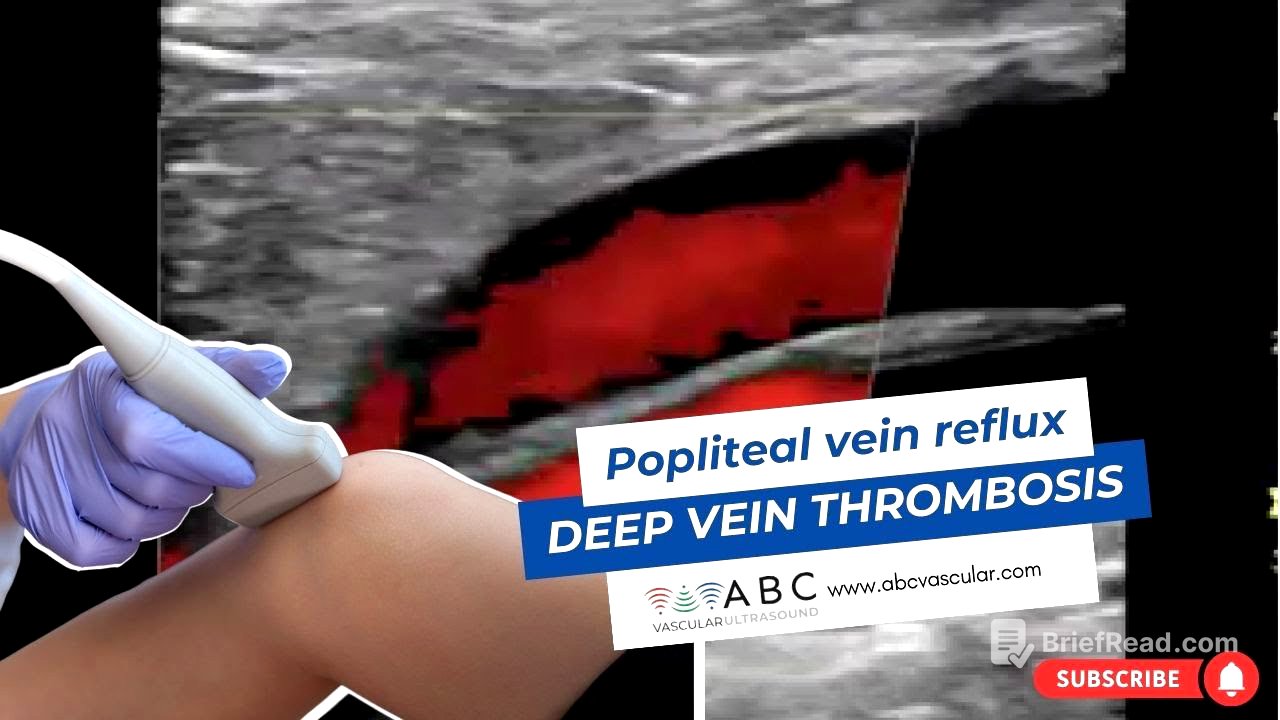TLDR;
This video presents a vascular ultrasound case study focusing on deep venous reflux in the popliteal vein of a 52-year-old female patient. The ultrasound demonstrates the patency and incompetency of the popliteal vein. Key findings include compressibility of the vein, absence of thrombus, and reflux greater than one second upon cuff release.
- Patency and incompetency of the popliteal vein are demonstrated.
- Reflux is measured using pulse wave Doppler.
- The popliteal vein shows no thrombosis but exhibits venous reflux greater than one second.
Introduction [0:02]
The video introduces a case study involving a 52-year-old female patient diagnosed with an isolated popliteal vein issue. A six-month ultrasound follow-up reveals the patency and incompetency of the popliteal vein. The study uses various ultrasound techniques to assess the vein's condition.
B-Mode Imaging [0:24]
Using B-mode imaging, the ultrasound shows that the popliteal vein is compressible and its lumen is echo-free, indicating the absence of thrombus. The popliteal artery is visible underneath the popliteal vein. This imaging mode helps in assessing the basic structural integrity of the vein.
Color Doppler Flow [0:38]
Color Doppler flow is applied to confirm the patency of the popliteal vein. By using dynamic maneuvers such as distal cuff compression, venous flow is provoked. Upon release of the cuff, reflux is observed, appearing as red on the color scale, indicating the backflow of blood.
Pulse Wave Doppler [0:58]
Pulse wave Doppler is used to measure the length of the venous reflux. Initially, basic information about the venous flow is obtained, showing a phasic pattern. Distal cuff compression and release reveal a graded reflux of the popliteal vein, measured at one second, indicating incompetency.
Conclusion [1:22]
In conclusion, the popliteal vein is patent and free from thrombosis but exhibits incompetency, with venous reflux measured at greater than one second. The ultrasound findings confirm the diagnosis of deep venous reflux in the popliteal vein.









